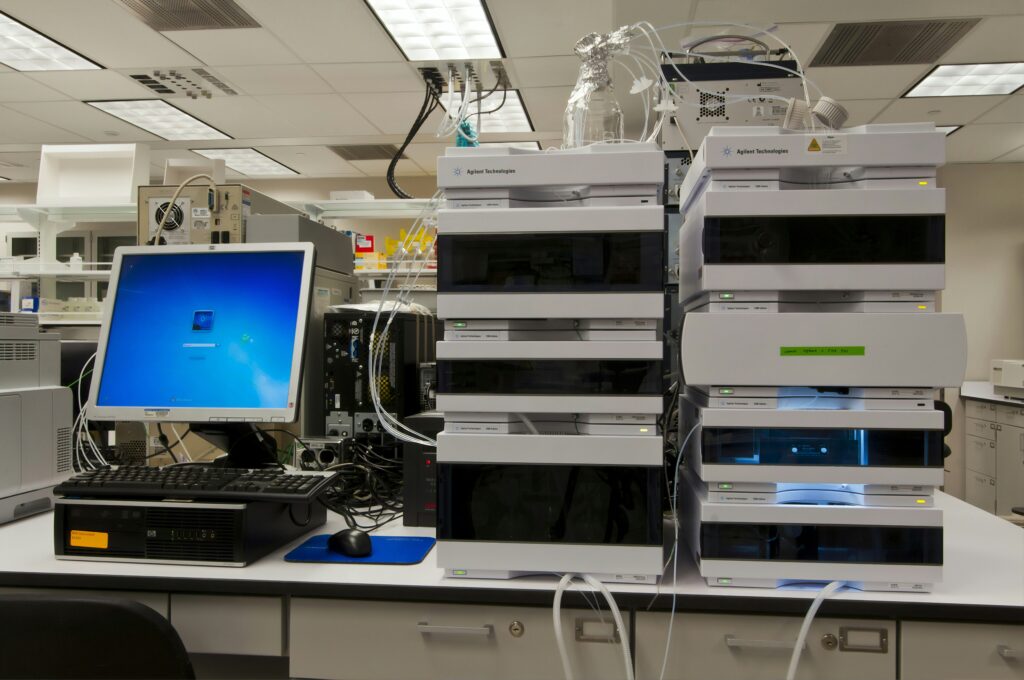
If you’ve ever visited an optometrist for a routine eye exam, you might have encountered a bioimaging device that requires you to rest your chin and forehead against it. This device is known as optical coherence tomography (OCT), a technology widely employed in eye clinics globally. OCT utilizes light waves to capture high-resolution, cross-sectional images of the retina in a non-invasive manner. These images are crucial for diagnosing and monitoring various eye conditions.
However, the mechanical components of OCT devices, such as spinning mirrors, can increase the likelihood of device failure. Addressing this challenge, researchers at the University of Colorado Boulder have developed a groundbreaking bioimaging device that operates with significantly lower power and entirely without mechanical parts. This innovation holds the potential to enhance the detection of eye and even heart conditions.
Non-Mechanical Innovation in Bioimaging
In a study recently published in Optics Express, a team of engineers introduced a device that employs electrowetting—a process that alters the surface shape of a liquid to perform optical functions. “We are really excited about using one of our devices, in particular for retinal imaging,” said lead author Samuel Gilinsky, a recent PhD graduate in electrical engineering. “This could be a critical technique for in-vivo imaging for inside our bodies.”
By eliminating the need for scanning mirrors, the new technique requires less electrical power than traditional OCT and bioimaging devices.
“The benefits of non-mechanical scanning are that you eliminate the need to physically move objects in your device, which reduces any sources of mechanical failure and increases the overall longevity of the device itself,” Gilinsky explained.
Gilinsky emphasized the importance of making OCT systems compact, lightweight, and safe for human use. The research team included Juliet Gopinath, professor of electrical engineering; Shu-Wei Huang, associate professor of electrical engineering; Victor Bright, professor of mechanical engineering; PhD graduates Jan Bartos and Eduardo Miscles; and PhD student Jonathan Musgrave.
“Our work presents an opportunity where we can hopefully detect health conditions earlier and improve the lives of people,” noted Gopinath.
Testing with Zebrafish: A Surprising Ally
To evaluate the device’s biomedical imaging capabilities, researchers turned to an unexpected aquatic subject: zebrafish. These fish are often used in OCT research due to the similarity between their eye structure and that of humans. The study focused on identifying the cornea, iris, and retina within zebrafish eyes.
Achieving in-vivo or other bioimaging requires scientists to pinpoint the structure of the samples of interest, such as eyes or internal organs. The team aimed for benchmarks of 10 microns in axial resolution and approximately 5 microns in lateral resolution—dimensions smaller than the width of a human hair.
“The interesting result was that we were able to actually delineate the cornea and iris in our images,” said Gilinsky. “We were able to meet the resolution targets we aimed for, which was exciting.”
Testing this bioimaging device opens new avenues for mapping retinal aspects essential for diagnosing eye conditions like age-related macular degeneration and glaucoma. Additionally, Gilinsky mentioned that the new technique could assist in delineating human coronary features, crucial for diagnosing heart disease—the leading cause of death in the United States.
Future Prospects and Technological Advancements
With the research team’s expertise in microscopy systems, they are optimistic about creating endoscopes that could revolutionize bioimaging technology.
“There is a growing push to make endoscopes as small in diameter and flexible as possible to cause as little discomfort as possible,” Gilinsky noted. “By using our components, we can maintain a very small-scale optical system compared to a mechanical scanner that can help OCT technologies.”
The project received funding from the Office of Naval Research, National Institutes of Health, and the National Science Foundation. As this innovative technology progresses, it could significantly impact the early detection and treatment of various health conditions, ultimately improving patient outcomes and enhancing the quality of life for many individuals.







